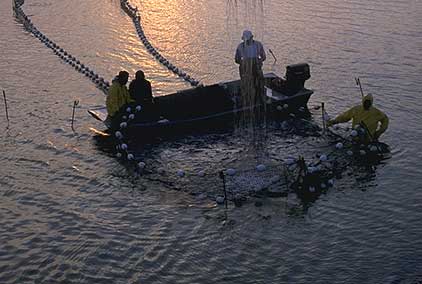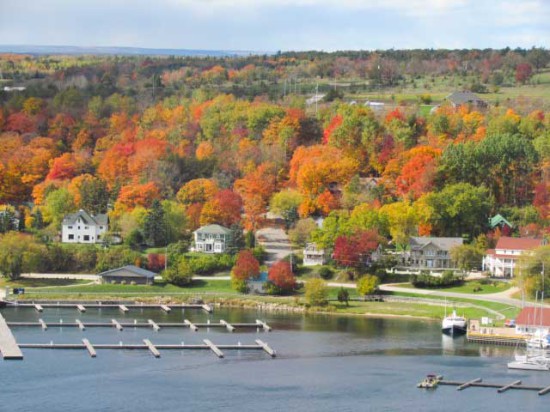MANITOULIN—While not surprised that the Experimental Lakes Area (ELA) in Northern Ontario is closing, representatives of the Northern Ontario Aquaculture Association (NOAA) are disappointed this is the case due to the research and studies to come out of the ELA over the years.
“We have used the research that has been done at ELA, but it’s no surprise it is being looked at for closure,” said Todd Gordon of the NOAA last week. “It isn’t surprising the DFO couldn’t find another organization or group to run it. In a government run facility, sometimes government clout and money is needed to run a facility like this. We were involved in the ELA, which is a multi-purpose facility, and we were involved on the aquaculture side of research and science being carried out on the natural setting lakes (in the ELA).”
The federal government has announced its plans to close the ELA in Northern Ontario because it hasn’t found an organization willing to take over the world renowned facility, with funding expected to run out for the giant outdoor laboratory on March 31. The federal government will relinquish control on September 1, but won’t do any research during the five-month interim period.
Kevin Stringer, assistant deputy minister in charge of science for the Department of Fisheries and Oceans (DFO), told CBC News March 7 that the federal government has indicated that the facility will not be run by the federal government this summer. That said, it could be mothballed.
Mr. Stringer did say the government is in negotiations with a number of organizations which could potentially take over operation of the ELA, but he couldn’t give any details because of the sensitivity of the talks.
The ELA is an area of 58 small lakes in northwestern Ontario where DFO conducts experiments on whole bodies of water. The projects began in 1968. The research done there was instrumental in determining the causes and effects of acid rain. That research, in turn, led to the Acid Rain Treaty Agreement between Canada and the US. The decision to cut funding for the facility was made in the 2012 budget. It costs about $2 million a year to run the ELA.
The land and lakes of the ELA belong to Ontario, while management of the facility was the federal government’s responsibility.
Scientists worry that a 44 year-long continuous record of data is going to be lost if the facility is closed down, and this type of facility does not exist anywhere else in the world.
Residents of Northwestern Ontario gathered with scientists in Kenora, Sioux Lookout and Dryden on March 5 on “Save ELA Day” to hold public meetings on stopping the federal government’s announced closure of the ELA.
“People in Northern Ontario are extremely concerned,” said Independent MP Bruce Hyer (Thunder Bay-Superior North) in a release. “There are only weeks left for the Conservative government to find a suitable operator to take over our Experimental Lakes Area, before we lose it forever. This world-renowned research facility is a source of pride for our region, responsible for breakthroughs that have helped prevent acid rain and phosphate pollution, amongst many others.”
As many as 16 municipalities in Northern Ontario have passed resolutions calling on the federal government to reverse its decision to close the ELA.
“Canada’s ELA is the most innovative water research facility in the world, and if we lose it, we lose our ability to predict human impacts on lake ecosystems and prevent damage,” said Dr. Jules Blais, president of the Society of Canadian Limnologists. “The Canadian government is terminating a 44-year monitoring record for air and water at a time when the environment is experiencing unprecedented impacts from climate warming, invasive species, and toxic chemicals like mercury. It’s our hope that these efforts in Kenora will help persuade the government to finally listen to Canadians and scientists alike, and not abandon its investment in ELA.”
“A lot of significant types of research is carried out at the ELA, including what we can expect to see on the horizon in the long term,” said Mr. Gordon. “This stuff is very useful, especially since the work being done is in a natural setting. However, “the ELA is expensive to run, and if the federal government can’t afford to run it, how do they expect another organization or institution to take it over and run it?”
“This government doesn’t believe in science or anything that contradicts their world view,” said Mr. Gordon. “We are talking about things like acid rain and their affects and a number of other significant things that the research looked at at the ELA. Now to suddenly stop and not continue the research means all that data and long term history is gone. Even if the ELA was set up again next year, the year’s data and research will be gone for decades.”
Mike Meeker, president of the NOAA, pointed out, “An awful lot of the work being done at ELA is not part of the DFO mandate as it was supposed to be.”
“There is no doubt the ELA is great, but it needs to be paid for, and a lot of the work being done at the ELA doesn’t meet the DFO mandate as was designed to,” said Mike Meeker, president of the NOAA. “And there are no other government agencies helping it out either. It needs funding support from other government agencies, and no one has stepped up to the plate.”
However, Mr. Meeker said, “It’s a shame it is being closed. I have been involved with a lot of research that has been done at the ELA, it does really good work for us in the aquaculture industry. DFO has said they don’t really want to shut it down, but it can’t handle the operating costs.”
“Some scientists deserve a lot of the blame for it closing, doing work without permission of the DFO,” stated Mr. Meeker. “I admire the work that has been done at ELA and it is work that needs to be done.”





